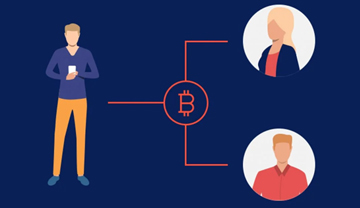Imagine if you could spend the same $20 bill twice. You could buy a pizza and then turn around and use that same $20 to fill up your gas tank. In the physical world, this sounds impossible, right? But in the digital world, particularly with cryptocurrencies, the concept of double spending can pose a significant problem. Let’s dive into what double spending is, how it affects both cryptocurrencies and traditional banking systems, and what measures are in place to prevent it.
What is a Double Spending Attack?
A double spending attack happens when someone tries to spend the same digital currency twice. This is a unique issue for digital currencies because, unlike physical money, digital tokens can be duplicated or faked if not properly controlled.
Double Spending in Cryptocurrencies
In the world of cryptocurrencies, double spending is a significant concern. Cryptocurrencies like Bitcoin use blockchain technology to prevent double spending, but attacks can still happen if someone finds a way around the system
Example of a Double Spending Attack in Cryptocurrency
Imagine Alice has 1 Bitcoin (BTC). She sends 1 BTC to Bob for a service. Simultaneously, she also sends the same 1 BTC to Carol. Both transactions get broadcasted to the network, but only one can be confirmed and added to the blockchain. If Alice manages to manipulate the network’s confirmation process, she could trick Bob into thinking he received the Bitcoin, while the network eventually confirms the transaction to Carol instead. Bob ends up with nothing, and Alice has effectively double-spent her Bitcoin.
Double Spending in Banking Systems
Double spending isn’t just a cryptocurrency problem; it can also occur in traditional banking systems, though it’s less common due to stringent regulations and centralized control.
Example of a Double Spending Attack in Banking
Consider this scenario: John writes a check for $500 to Mike and gives it to him. Meanwhile, he also writes a check for the same amount to Sarah and hands it over. If Mike and Sarah cash their checks at different banks simultaneously, they both might initially get credited with $500. However, once the checks are processed and reach John’s bank account, it will become apparent that John doesn’t have enough funds to cover both checks. One of the transactions will eventually bounce, but John has managed to temporarily double-spend his money.
Preventing Double Spending Attacks
Techniques in Cryptocurrencies
- Blockchain Technology: The most popular cryptocurrencies use blockchain technology to prevent double spending. Every transaction is recorded on a public ledger, and once confirmed by multiple network nodes (miners), it becomes part of the blockchain and is immutable.
- Consensus Mechanisms: Methods like Proof of Work (PoW) and Proof of Stake (PoS) ensure that network participants (miners or validators) agree on the validity of transactions. These mechanisms make it computationally impractical to alter past transactions, thus preventing double spending.
- Timestamping: Transactions are timestamped and included in blocks. The block confirmation process ensures that once a transaction is included in a block, it cannot be altered or spent again.
Techniques in Banking Systems
- Atomic Transactions: In banking, atomic transactions ensure that a series of operations either all happen or none happen. This means if a transaction involves transferring money from one account to another, both the debit and credit operations must succeed for the transaction to be completed. If either operation fails, the transaction is rolled back, preventing any partial completion that could lead to inconsistencies.
- Centralized Ledger: Traditional banks maintain centralized ledgers, where all transactions are recorded and monitored. This central control makes it easier to detect and prevent double spending.
- Transaction Verification Systems: Banks use sophisticated software and protocols to verify transactions. Real-time processing and automated systems help ensure that each transaction is unique and accounted for.
- Using Queues and Account Locks: To prevent issues like double spending, banks often use queues to manage transaction requests and locks to secure accounts during processing. When a transaction is initiated, the system can lock the involved accounts, ensuring that no other transactions can occur simultaneously. Once the transaction is verified and completed, the locks are released.
- Regulatory Oversight: Banks are subject to regulations that require strict auditing and reporting. Regular checks and balances help prevent fraudulent activities, including double spending.
Conclusion
Double spending attacks pose a significant threat to both digital and traditional financial systems. Cryptocurrencies rely on blockchain technology, consensus mechanisms, and timestamping to prevent these attacks. Traditional banking systems use atomic transactions, centralized ledgers, transaction verification systems, and regulatory oversight. Understanding these preventive measures highlights the efforts to maintain trust and security in financial transactions.
Further reading :
https://www.geeksforgeeks.org/atromic-transactions-in-os/
https://medium.com/@estheraladioche569/atomic-transaction-97fe50a3f8e4









Leave a Reply